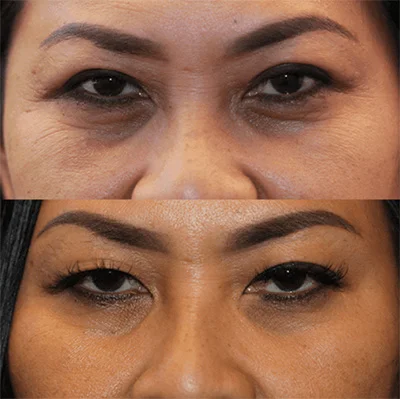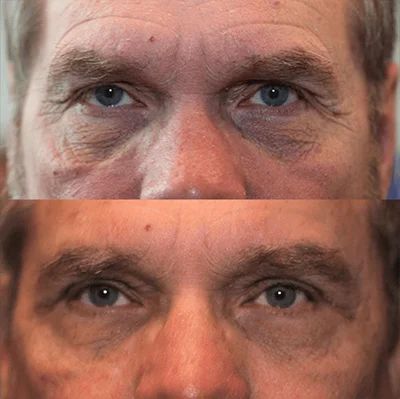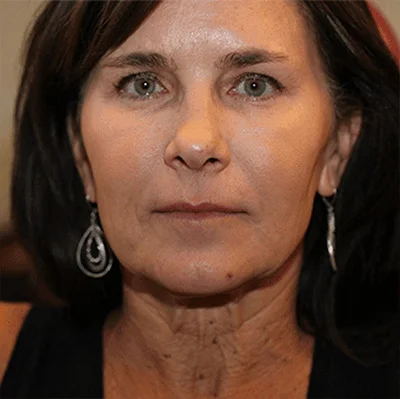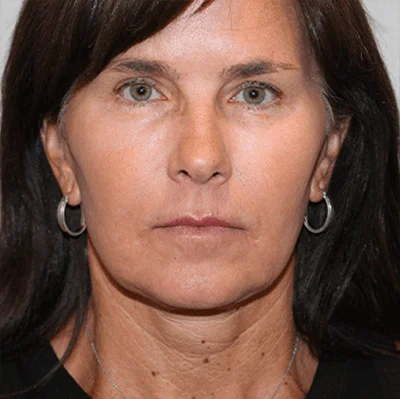
A healthy eye is a moist eye. Each eye contains glands around the eyelids that secrete tears, which are spread across the cornea (front surface) each time you blink. The tears serve to lubricate the eye, wash away pathogens and debris, and help you see clearly. If you produce too many tears, the excess drains through ducts in the inner corners of your eyelids down the back of your nose.
“Dry eye” is a common medical condition that arises when your eyes don’t contain enough tears — or enough good-quality tears — to stay moist and healthy. When you’re young, you might have acute attacks of dry eye, but as you age, the condition often turns chronic.
Dry eye is more than an annoyance. Left untreated, it can lead to eye infections, damage to the eye’s surface, and blurry vision.
At Arizona Ocular & Facial Plastic Surgery, oculofacial plastic and reconstructive surgeon Dr. Dustin Heringer starts by treating dry eye conservatively, but in some cases, tear duct surgery is the best option. Here’s a closer look at dry eye and the procedure that can help treat it.
The causes of dry eye
The most frequent cause of dry eye is an imbalance between tear production and duct drainage. Those with dry eye produce too few tears, their tears aren’t good quality, or both. The leading causes for inadequate tears include:
- Aging
- Problems with the secretion glands
- Underlying medical conditions (e.g., thyroid problems, diabetes, rheumatoid arthritis)
- Medication side effects
- Environmental factors (e.g., wind, dry air)
Tears contain three layers: oil, water, and mucus. If any layer becomes damaged, the tears you produce may be too watery, fail to spread evenly, or evaporate too quickly. All three result in dry eye.
While you wouldn’t think watery eyes would be a symptom of dry eye, it’s actually quite common. When there aren’t enough good-quality tears, the eye attempts to lubricate itself; however, the tears it does produce come only from the watery layer, so what you get is spillage.
Diagnosing and treating dry eye
To determine the underlying cause of your tearing, irritation, and burning feeling, Dr. Heringer performs a complete exam, including measurements of your tear production, and examines the placement and function of your eyelids and the surrounding muscles. He also checks for signs of infection, such as redness, swelling, or discharge in the eye.
In addition, Dr. Heringer performs an irrigation test to determine if your tear ducts are blocked. He places a fluorescent dye in the corner of your eye. If the dye remains in the eye rather than draining out, the ducts are blocked.
Initially, the doctor suggests conservative treatments to help improve the symptoms of dry eye, including:
- Use over-the-counter or prescription gels, ointments, and drops
- Avoid smoking and secondhand smoke
- Limit your screen time (you blink less)
- Wear wraparound sunglasses to protect your eyes from the environment
- Use warm, damp compresses
- Apply light pressure to stimulate tears
If these treatments fail to improve tear drainage, he may recommend tear duct surgery, medically known as a dacryocystorhinostomy (DCR).
A closer look at tear duct surgery
There are two methods of performing tear duct surgery:
1. External DCR
Dr. Heringer creates an opening from the lacrimal (tear duct) sac to your nasal cavity to aid with drainage. He makes a small incision in the skin, just under your eye and next to your nose. Through this incision, he creates a small opening in the bone so that the sac and nasal cavity are connected. He places a small stent in the opening to ensure the new duct remains open, then closes the incision with stitches.
2. Endoscopic DCR
Instead of going through the skin, Dr. Heringer threads an endoscope with a tiny camera through the nasal cavity. Using microscopic instruments to make a hole in the bone, he then connects the lacrimal sac with the nasal cavity and places a stent to hold the passage open. Because there’s no incision, you’ll have no scar. However, this procedure has a lower success rate than external DCR surgery.
After the surgery, Dr. Heringer provides you with eye drops and a nasal spray to alleviate any inflammation and protect against infection. He removes the stents within 3-6 months.
If you’re dealing with complications from dry eye and aren’t getting relief from conservative at-home treatments, you may be a good candidate for tear duct surgery. To learn more, and to schedule a consultation with Dr. Heringer, give us a call at any of our locations, or book online with us today.



